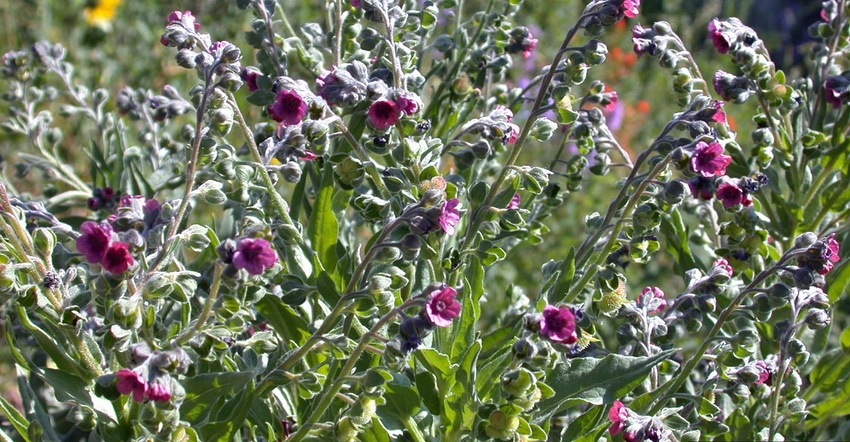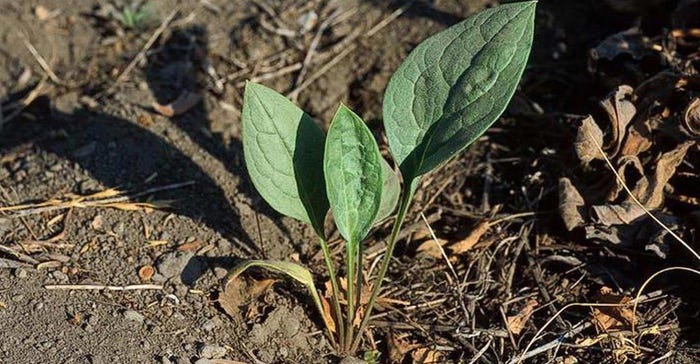
Houndstongue is a weed to watch for in 2020. It has been found mostly on rangeland in the Western U.S., but it is moving east according to Joe Ikley, North Dakota State University Extension weed specialist. Houndstongue was recently added to North Dakota’s noxious weed list.
Cows and horses can get a liver infection from eating houndstongue. They’ll often die within six months. The animals generally won’t eat the live plants, but sometimes the weed gets ground up in hay. Be careful when baling hay and when buying hay, Ikley says.
In the field, houndstongue’s distinctive purple flowers make it easy to easy to identify, but by the time the purple flowers come out it’s too late to control it with herbicide. A biennial, houndstongue is easiest to control the first year when plants are small.
Look for houndstongue in bare spots and gravely and alkali soils.
Control measures
Prevention is the best method to keep houndstongue from invading North Dakota, according to Ikley. Use only certified weed-free hay and eradicate new infestations before the plant can spread. Escort (metsulfuron) at 1 to 2 ounces per acre is very effective for controlling houndstongue and can be applied throughout the growing season.
First-year houndstongue rosettes can be controlled with 2,4-D at 2 pints per acre applied from late May to mid-June. Second-year plants are much less susceptible to 2,4-D. Plateau applied at 8 to 12 ounces per acre will control houndstongue pre- and postemergence, but grass injury, especially to the cool-season species, is likely when Plateau is applied at the maximum rate, says Rodney Lym, NDSU plant science professor.
 YOUNG ROSETTE: Houndstongue is easiest to control with herbicide in the first year rosette stage.
YOUNG ROSETTE: Houndstongue is easiest to control with herbicide in the first year rosette stage.

A root weevil, Mogulones cruciger, has been released for control of houndstongue in Canada. The insect has become well established in Alberta and has greatly reduced the houndstongue infestation in that province. Although this biocontrol agent has not been cleared for release in the U.S., M. cruciger establishment has been documented in Montana, Idaho and Washington, and it is very likely the insect eventually will be found in North Dakota.
The seed-feeding weevil M. borraginis is in the final stages of evaluation as a likely candidate for release. No other biocontrol agents are under consideration for release on houndstongue.
For additional information, see the NDSU Extension publication written by Lym, “Houndstongue: Identification and Control.”
Read more about:
HoundstongueAbout the Author(s)
You May Also Like






